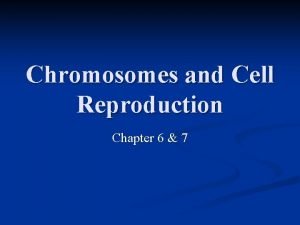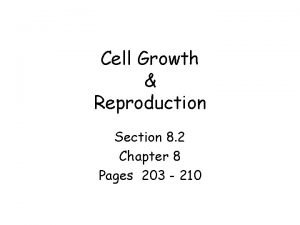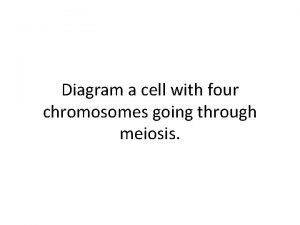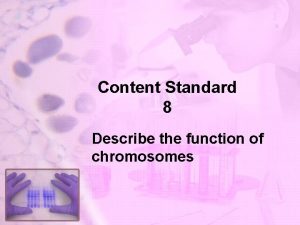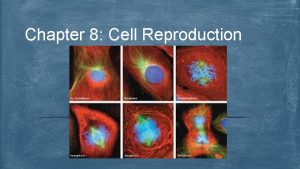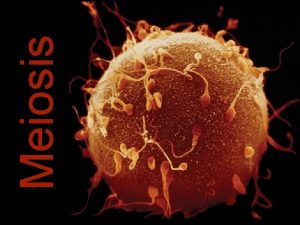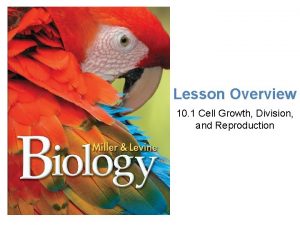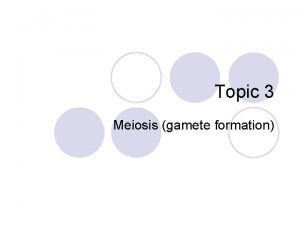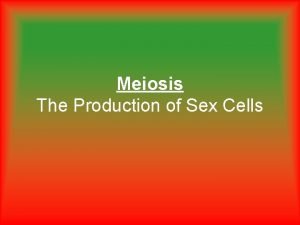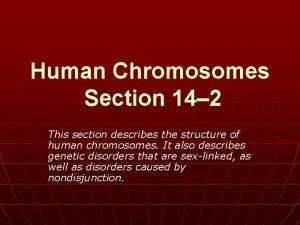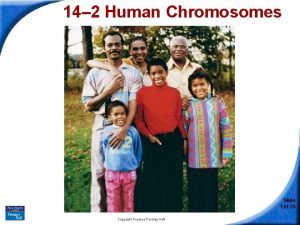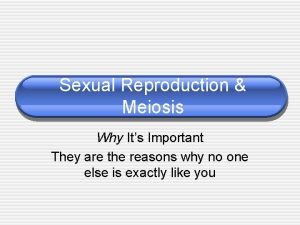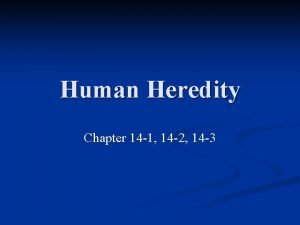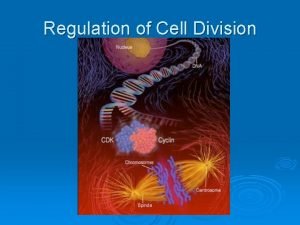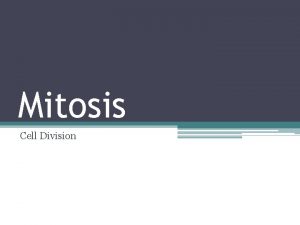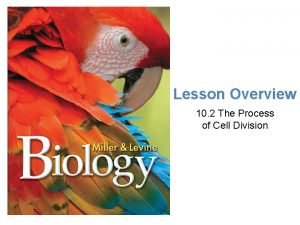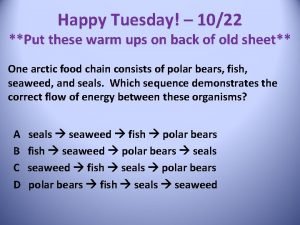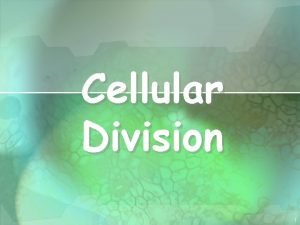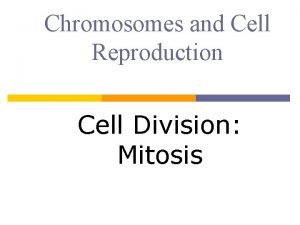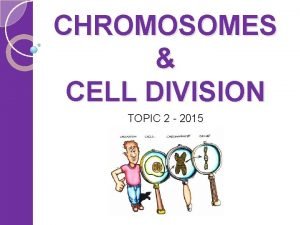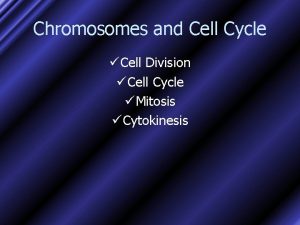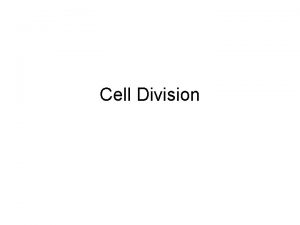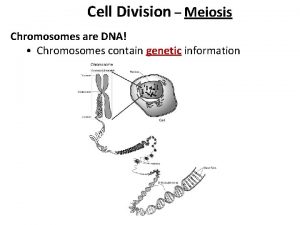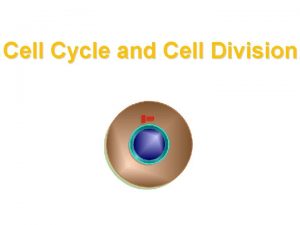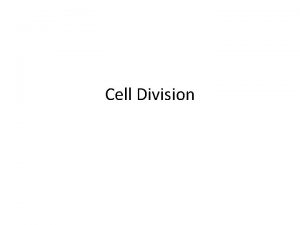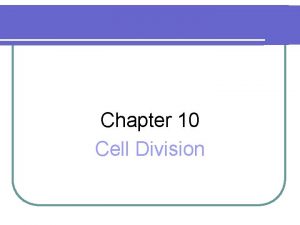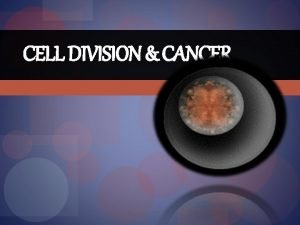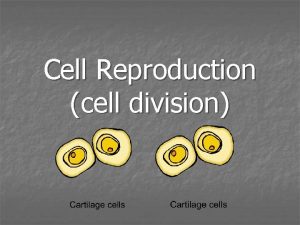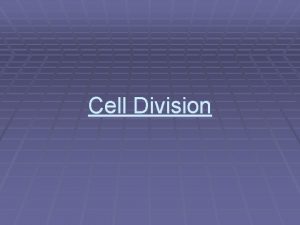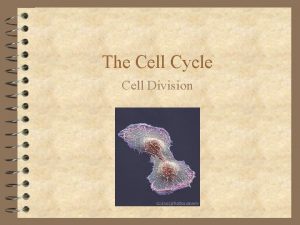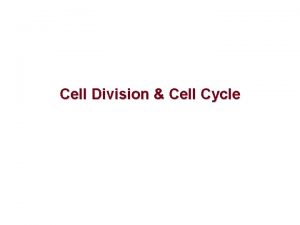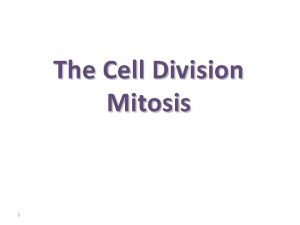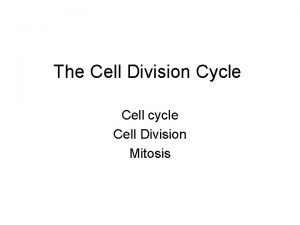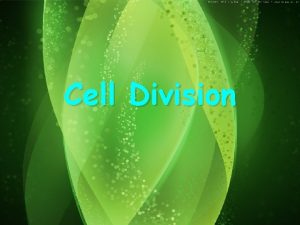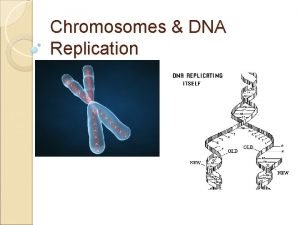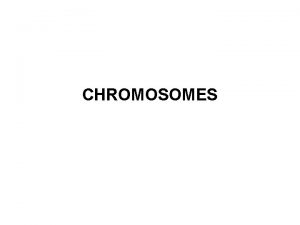Chapter 19 Chromosomes and Cell Division Human Chromosomes














































- Slides: 46

Chapter 19 Chromosomes and Cell Division


Human Chromosomes • Homologous chromosomes: one maternal & one paternal • Sex chromosomes: X & Y • Autosomes: the 22 pairs of chromosomes other than X & Y

Chromosomes Consist of DNA and Protein • Genes – 1000 -5000 genes/chromosome – Most genes code for a protein – Mutation causes change in nucleotide sequence of DNA • Somatic cells (Non-germ cells) have 46 chromosomes (23 pairs)

Most people have A. B. C. D. 23 chromosomes 46 chromosomes 23 pairs of chromosomes 46 pairs of chromosomes

Most people have A. B. C. D. 23 chromosomes 46 chromosomes 23 pairs of chromosomes 46 pairs of chromosomes





Chromosomes are composed of A. B. C. D. E. DNA Genes Chromatin All of the above None of the above

Chromosomes are composed of A. B. C. D. E. DNA Genes Chromatin All of the above None of the above

During Cell Division (Mitosis) Cells Replicate Their Chromosomes

DNA Replication (synthesis) • Precedes cell division • DNA polymerase (enzyme) catalyzes DNA synthesis • Necessary to maintain 46 chromosomes/cell


Overview of Mitosis

Cell Division • During metaphase the chromosomes form a line at the center of the cell




Cytokinesis Occurs Toward the End of Mitosis • Phase when Cytoplasm divides • Microfilaments act like purse string



Meiosis

Meiosis Forms Haploid Gametes • Occurs in gonads (ovary and testes) • Two Major Accomplishments of Meiosis – Reduce chromosome number of gametes by ½ – Shuffle the chromosomes and genes • This increases genetic variability in the population

Meiosis Forms Haploid Gametes • Meiosis: 1. Keeps the chromosome number constant through generations and 2. Increases genetic variability in the population • Meiosis involves two cell divisions

Overview of Meiosis

The following is accomplished during meiosis A. B. C. D. E. Two identical cells are produced Four identical cells are produced The chromosome number is doubled The genes are shuffled The number of chromosomes in the resulting cells is halved

The following is accomplished during meiosis A. B. C. D. E. Two identical cells are produced Four identical cells are produced The chromosome number is doubled The genes are shuffled The number of chromosomes in the resulting cells is halved

Comparison of Spermatogenesis and Oogenesis


Mammalian Egg With Polar Bodies

Meiosis and Mitosis Compared



Crossing over and independent assortment cause genetic recombination (gene shuffling) during meiosis

Crossing Over

Independent Assortment

Number of different gametes produced by humans • 23 pairs of chomosomes – Each pair line up randomly on the metaphase plate • Therefore 2 different combinations = 23 – > 8, 000 different gametes from each person

Gene shuffling during meiosis is caused by: A. Crossing over of chromosomes B. Independent assortment of chromosomes C. Nondisjunction of chromosomes D. Cytokinesis E. Condensation of chromosomes

Mistakes Sometime Happen During Meiosis • Failure of chromosomes to separate during meiosis creates cells with extra or missing chromosomes • Called Nondisjunction of Chromosomes


Examples of Nondisjunction – Down syndrome (three # 21 chromosomes) – Turner syndrome (one X chromosome) – Klinefelter syndrome (XXY)


Missing or extra sex chromosomes cause Turner syndrome and Klinefelter syndrome. (a) A female with Turner syndrome has one rather than the normal two X chromosomes. Because the ovaries are underdeveloped, she is usually infertile. (b) A male with Klinefelter syndrome is XXY. Klinefelter syndrome is characterized by small testes (and sometimes breast enlargement).

 Section 10-2 cell division
Section 10-2 cell division Cell cycle and cell division
Cell cycle and cell division Cell cycle and cell division
Cell cycle and cell division Chapter 6 chromosomes and cell reproduction
Chapter 6 chromosomes and cell reproduction Chapter 8 cell growth and division section 8-2 answer key
Chapter 8 cell growth and division section 8-2 answer key The scientist mathias schleiden studied _______ in ______.
The scientist mathias schleiden studied _______ in ______. Short division vs long division
Short division vs long division Division vocabulary
Division vocabulary How to synthetic divide
How to synthetic divide Synthetic division
Synthetic division Cell with four chromosomes
Cell with four chromosomes Which of the functions
Which of the functions Diploid vs haploid number
Diploid vs haploid number Diagram of mitosis and meiosis
Diagram of mitosis and meiosis Human needs and human development
Human needs and human development Chapter 8 human needs and human development
Chapter 8 human needs and human development Mitosis meiosis
Mitosis meiosis Locus
Locus Cell division mitosis and meiosis
Cell division mitosis and meiosis Cell growth division and reproduction
Cell growth division and reproduction Mitosis division
Mitosis division How many chromosomes do humans have
How many chromosomes do humans have Nondisjunction in a sentence
Nondisjunction in a sentence Section 14-2 human chromosomes
Section 14-2 human chromosomes 14-2 human chromosomes
14-2 human chromosomes How many chromosomes are in a human’s sex cells?
How many chromosomes are in a human’s sex cells? 14-2 human chromosomes
14-2 human chromosomes Difference between mercury cell and diaphragm cell
Difference between mercury cell and diaphragm cell Prokaryotic reproduction
Prokaryotic reproduction Animal cell plant cell venn diagram
Animal cell plant cell venn diagram Vacuole function
Vacuole function Is cytoplasm in plant and animal cells
Is cytoplasm in plant and animal cells Primary voltaic cell
Primary voltaic cell Whats the difference between plant and animal cells
Whats the difference between plant and animal cells Prokaryotic cell and eukaryotic cell
Prokaryotic cell and eukaryotic cell Idealized animal cell and plant cell
Idealized animal cell and plant cell Walker cell and hadley cell
Walker cell and hadley cell Animal rights and animal welfare venn diagram
Animal rights and animal welfare venn diagram Electrolytic cell picture
Electrolytic cell picture Flexible covering of an animal cell
Flexible covering of an animal cell Mitosis pmat diagram
Mitosis pmat diagram Frequency of cell division
Frequency of cell division Mitosis
Mitosis Why is cell division important
Why is cell division important About anaphase
About anaphase Cell division acronym
Cell division acronym Cell division name
Cell division name



